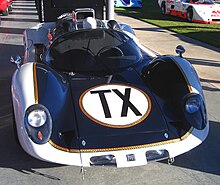Here it is, cutting went well, so did assembly.
How easy was this to assemble?
Peter says " Its the easiest boat kit to put together that I have ever done"
Peter did all his setting out in pencil on the inside of the 6mm plywood sheets first, that's the bulkheads, blocks and stringers etc,
The panel fit is perfect, my thanks to Martin of the Mirror Association in the UK for doing the work that produced the paper and digital files.
We have been asked to enlarge the drain holes and make them longer to use as a hand hole?
Panel fit again is perfect, the copper wire (supplied) pulled the plys together easily.
So here it is a world first, a CNC cut Mirror Dinghy and it was cut and assembled here in the Cape Town, South Africa. The fitting out will follow next week.
The pricing is ready, the base kit of CNC cut plywood, ISAF plaque and Mirror RSA licence will cost R10,347 (plus vat in SA) which is GBP575 only, shipping is possible.
Checking around I find we look to be the lower priced kit between the UK, Canada, and Australia and by some margin, more than 40% lower ? we will hold this offer until the end of April or unless our raw materials change price.
The lower price has nothing to do with a lack of quality, we are quoting on the best French grade of okoume marine ply, the saving comes from the fact we use a CNC machine to cut the plywood panels, others cut with a hand held electric jigsaw?
Contact me for the various options please, once the first build has been measured, orders will be processed in the order we receive them.
Roy
How easy was this to assemble?
Peter says " Its the easiest boat kit to put together that I have ever done"
Peter did all his setting out in pencil on the inside of the 6mm plywood sheets first, that's the bulkheads, blocks and stringers etc,
The panel fit is perfect, my thanks to Martin of the Mirror Association in the UK for doing the work that produced the paper and digital files.
We have been asked to enlarge the drain holes and make them longer to use as a hand hole?
Panel fit again is perfect, the copper wire (supplied) pulled the plys together easily.
So here it is a world first, a CNC cut Mirror Dinghy and it was cut and assembled here in the Cape Town, South Africa. The fitting out will follow next week.
The pricing is ready, the base kit of CNC cut plywood, ISAF plaque and Mirror RSA licence will cost R10,347 (plus vat in SA) which is GBP575 only, shipping is possible.
Checking around I find we look to be the lower priced kit between the UK, Canada, and Australia and by some margin, more than 40% lower ? we will hold this offer until the end of April or unless our raw materials change price.
The lower price has nothing to do with a lack of quality, we are quoting on the best French grade of okoume marine ply, the saving comes from the fact we use a CNC machine to cut the plywood panels, others cut with a hand held electric jigsaw?
Contact me for the various options please, once the first build has been measured, orders will be processed in the order we receive them.
Roy


















.jpg)





